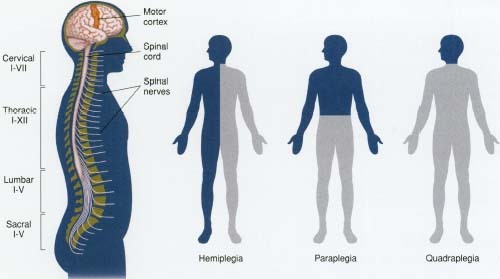Hemiplegia
From Psy3242
(Difference between revisions)
(fixed resources) |
|||
| Line 8: | Line 8: | ||
== Resources == | == Resources == | ||
| - | [ | + | *[http://www.ninds.nih.gov/disorders/alternatinghemiplegia/alternatinghemiplegia.htm NIH site] |
| - | + | *[http://www.wisegeek.com/what-are-some-causes-of-hemiplegia.htm Online encyclopedia site] | |
| - | [ | + | *Stirling, John. Introducing Neuropsychology |
| - | + | *Ogden, Jenni A. Fractured Minds: A Case Study Approach to Clincial Neuropsychology | |
| - | Stirling, John. Introducing Neuropsychology | + | |
| - | + | ||
| - | Ogden, Jenni A. Fractured Minds: A Case Study Approach to Clincial Neuropsychology | + | |
Revision as of 11:38, 27 March 2008
Hemiplegia describes the condition of a brain damaged individual who is unable to intentionally move parts of his or her body on the side opposite that of the brain damage. Hemplegia usually occurs as a result of a loss of blood supply in the mid-cerebral artery due to aneurysm, hemorrhage, or clot. It may also be caused by a head injury, epilespy, and/or tumor. In addtion, damage to subcortical structures, such as the basal ganglia, may result in hemplegia, since such structures are often served by the mid-cerebral artery.
Resources
- NIH site
- Online encyclopedia site
- Stirling, John. Introducing Neuropsychology
- Ogden, Jenni A. Fractured Minds: A Case Study Approach to Clincial Neuropsychology

